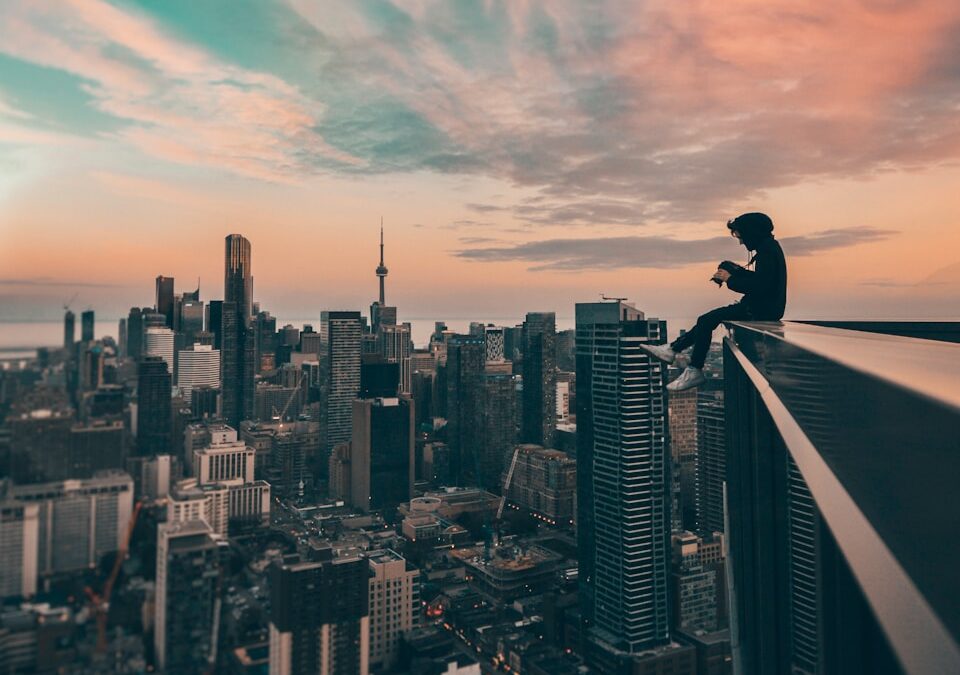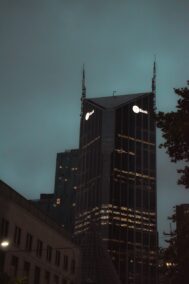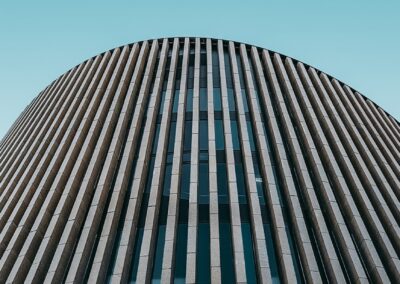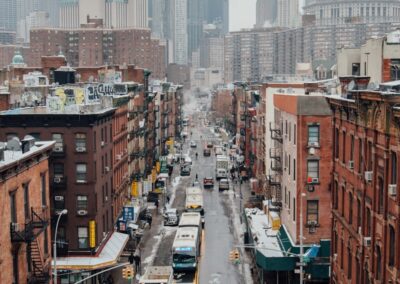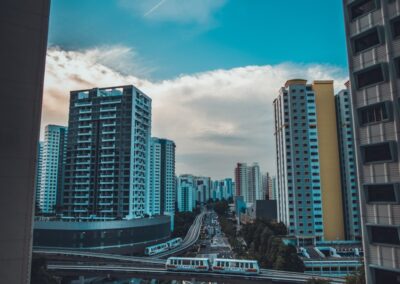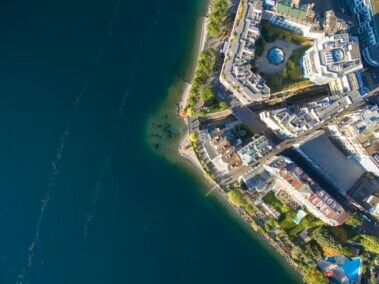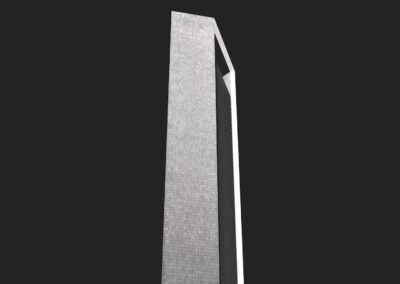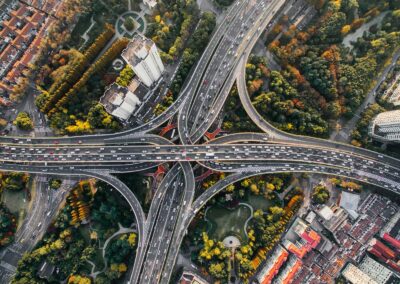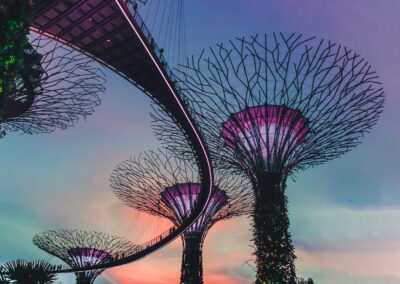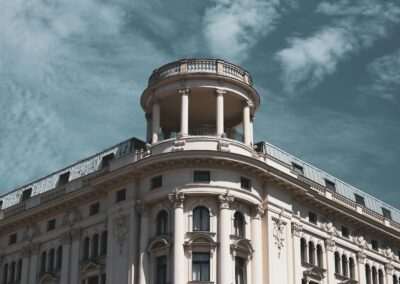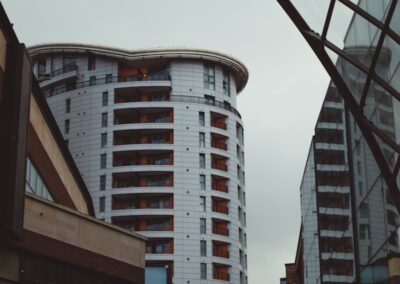Global Perspectives on Vertical Urban Development
Innovative Approaches in Vertical Urban Development
Vertical urban development has become a critical strategy for addressing the challenges of urbanization in cities worldwide. By focusing on vertical urban development, cities like Riyadh, Dubai, and their global counterparts are maximizing land use efficiency and creating sustainable urban environments. This approach is not only transforming skylines but also reshaping how cities grow and function.
In Saudi Arabia, particularly in Riyadh, vertical urban development is seen as a solution to accommodate rapid population growth and urban expansion. The city has adopted a master plan that emphasizes high-density residential and commercial buildings, integrating advanced technologies for sustainability and energy efficiency. Riyadh’s approach includes mixed-use developments that combine living, working, and recreational spaces, fostering a vibrant urban lifestyle while minimizing the need for extensive transportation networks.
Dubai, on the other hand, is renowned for its iconic skyscrapers and ambitious architectural projects. The city’s commitment to vertical development is evident in structures like the Burj Khalifa and the upcoming Dubai Creek Tower. Dubai’s approach focuses on luxury and innovation, incorporating cutting-edge technologies such as smart building systems and renewable energy sources. This not only enhances the city’s global reputation but also attracts businesses and tourists, driving economic growth.
Internationally, cities like New York and Tokyo have long embraced vertical urban development due to their limited land availability. In New York, zoning laws have been updated to encourage the construction of taller buildings, particularly in Manhattan. Tokyo has implemented strict building codes and advanced engineering solutions to ensure that high-rise buildings can withstand earthquakes. These cities demonstrate how vertical development can address unique geographical and environmental challenges while supporting economic vitality.
Challenges in Vertical Urban Development
Despite the numerous benefits, vertical urban development also presents significant challenges. One of the primary issues is the high cost of construction and maintenance of tall buildings. Advanced engineering techniques, safety measures, and sustainable materials can drive up costs, making vertical development more expensive than traditional horizontal expansion. This financial barrier can limit the feasibility of such projects, especially in developing regions.
Additionally, vertical urban development can strain existing infrastructure. High-density living requires robust transportation systems, efficient waste management, and reliable energy supply. Cities must invest heavily in upgrading their infrastructure to support the increased demand that comes with vertical growth. Failure to do so can lead to congestion, pollution, and reduced quality of life for residents.
Another challenge is the social and cultural impact of vertical living. High-rise buildings can create a sense of isolation among residents, reducing opportunities for community interaction. Urban planners must design vertical developments that include communal spaces and amenities to foster social cohesion. Ensuring that these developments are inclusive and accessible to all socioeconomic groups is also crucial to prevent social stratification.
Opportunities and Innovations in Vertical Urban Development
Sustainability and Smart Technology Integration
One of the most significant opportunities in vertical urban development lies in the integration of sustainability and smart technologies. Cities like Riyadh and Dubai are at the forefront of incorporating green building practices and smart city initiatives into their vertical developments. These innovations not only reduce the environmental impact of tall buildings but also enhance their efficiency and livability.
Sustainable design features, such as green roofs, solar panels, and rainwater harvesting systems, can significantly reduce the carbon footprint of high-rise buildings. In Dubai, the Al Bahar Towers utilize a dynamic facade that adjusts to the sun’s position, reducing heat gain and minimizing the need for air conditioning. Such technologies contribute to energy savings and environmental sustainability, making vertical developments more resilient to climate change.
Smart building systems, powered by the Internet of Things (IoT), are transforming how vertical developments operate. These systems can optimize energy use, monitor building performance, and enhance security, providing a better living experience for residents. In Saudi Arabia, smart city initiatives are being integrated into new vertical developments, creating interconnected urban environments that are efficient, safe, and sustainable.
Economic Growth and Urban Revitalization
Vertical urban development also presents significant economic opportunities. By concentrating commercial and residential spaces in high-rise buildings, cities can create dense urban centers that drive economic activity. In Riyadh and Dubai, vertical developments attract international businesses, leading to job creation and increased economic output. These cities become hubs of innovation and commerce, boosting their global competitiveness.
Urban revitalization is another key benefit of vertical development. In many cities, aging infrastructure and urban sprawl have led to declining downtown areas. Vertical developments can breathe new life into these areas by introducing modern, mixed-use buildings that attract residents and businesses. This revitalization can spur economic growth, improve public spaces, and enhance the overall quality of life.
Moreover, vertical urban development can help address housing shortages in densely populated cities. By building upwards, cities can increase the supply of housing without expanding their geographical footprint. This approach is particularly relevant in places like Tokyo and New York, where land is scarce and expensive. Affordable high-rise housing can provide a solution to urban housing crises, ensuring that cities remain inclusive and vibrant.
Conclusion
In conclusion, vertical urban development offers a promising solution to the challenges of urbanization, providing economic benefits, sustainability, and opportunities for innovation. Business executives, mid-level managers, and entrepreneurs in Saudi Arabia, the UAE, Riyadh, and Dubai must embrace these approaches to create resilient and dynamic urban environments. By addressing the challenges and leveraging the opportunities of vertical development, cities can enhance their global standing and improve the quality of life for their residents. This forward-thinking approach not only supports economic growth but also promotes sustainable and inclusive urbanization for the future.
—
#verticalurbanddevelopment #urbanplanning #sustainablecities #moderntechnology #SaudiArabia #UAE #Riyadh #Dubai

